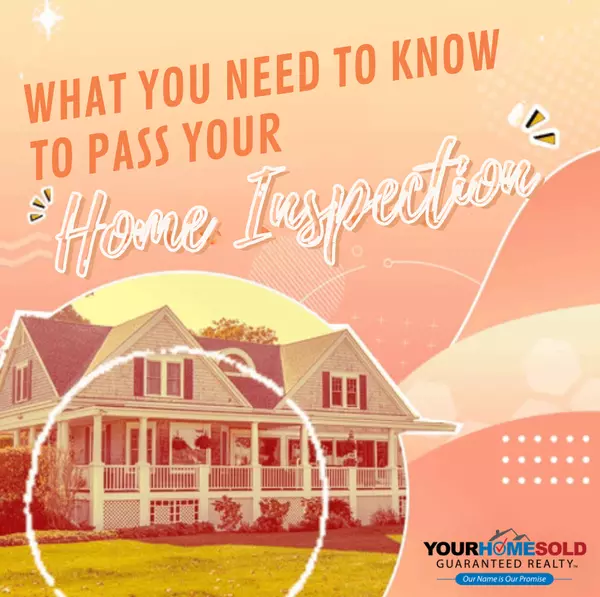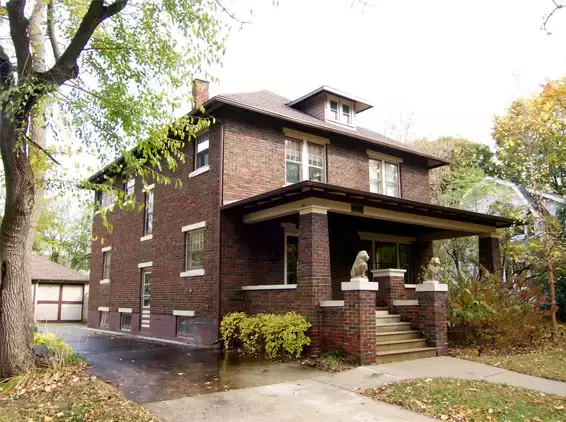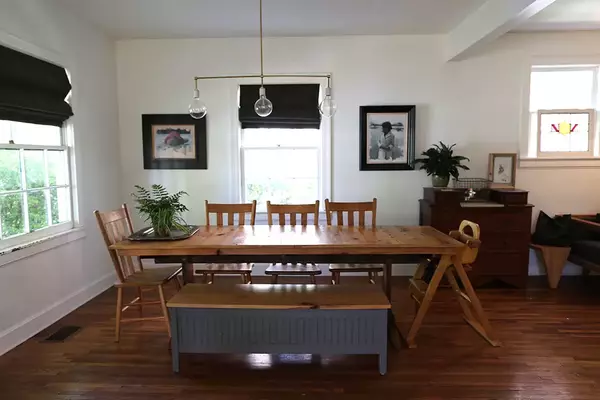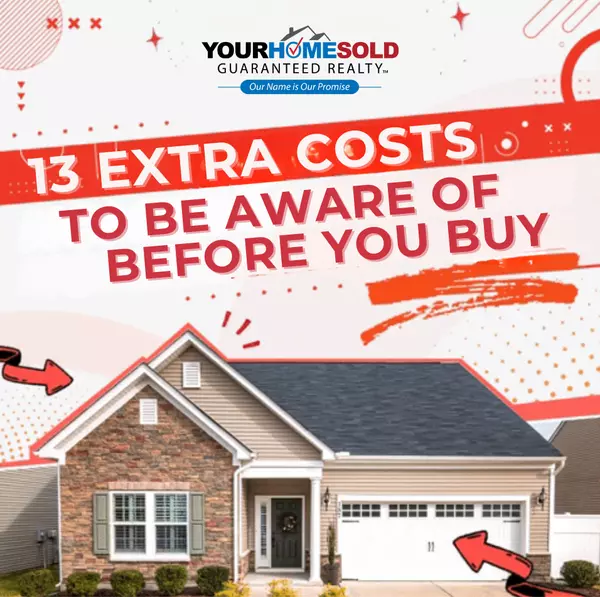
Move Up Guarantee
How to Avoid Getting Stuck With Two Homes The Problem We’ve all heard the old saying about being caught between a rock and a hard place. Well, unfortunately, that’s where most homeowners find themselves when they decide to move from one home to another. The Real Estate Catch 22 You see, if you buy before selling, you could run the risk of owning two homes. Or, just as bad, if you sell first, you could end up homeless. That’s what is known as the Real Estate Catch 22, and for thousands of homeowners, it’s an extremely stressful position they find themselves in. “ If you buy before selling, you could run the risk of owning two homes...” How to Avoid The Real Estate Catch 22 “...or just as bad, if you sell first, you could end up homeless” This financial and emotional tightrope is one many homeowners feel they have to walk alone. However, you should seek out agents offering specialized programs that can eliminate the stress and worry associated with selling and buying another home. The Solution The Dilemma The biggest dilemma when considering purchasing another home is deciding whether to buy first or sell first. Either way is risky because you could end up owning two homes or no home at all. Let’s face it, the real estate market has become a tough environment for buyers and sellers alike. The fact is that it’s more difficult to get homes sold today and therefore it’s essential that real estate agents look for new and innovative ways to meet the demands of the market. The Solution A new and innovative program that some agents offer actually guarantees the sale of your home and takes away all of the worry and stress associated with selling and buying another home. Here’s How it Works 1. Your agent will prepare a total market analysis including a computerized print-out of all comparable home sales and listings in your area. 2. With this information you and your agent can determine a market value for your home. 3. This establishes your guaranteed price and list price which you will receive up front (in writing) before your home is marketed. 4. You are doubly protected because you know that your home will sell for the guaranteed price. However if you receive an offer from an outside buyer for more than the guarantee price you get the higher offer. 5. You can confidently look for your next home and immediately place a firm cash offer (not a conditional one) when you find a home you like because you know the minimum that your home will sell for and when you can expect to receive the money from it’s sale. 6. This service eliminates the usual stress and worry (the emotional roller coaster ride) of whether to buy first or sell first so you can avoid the risk of getting stuck with two homes or no home at all. Remember, not all agents are alike and you should consider only those that can offer you the most innovative marketing plan available to ensure that your needs are completely and properly met.

Avoid These Mistakes
The 9 Step System To Get Your Home SOLD FAST And For TOP DOLLAR! The Real Estate Market Has Changed...Remember not so long ago, when you could make your fortune in real estate. It was nothing then to buy a home, wait a short while, and then sell it at a tidy profit. And then do it all over again. Well, as you probably know, times have changed. As good as the market is right now, home prices are still below what they were at their peak. Buyers are far more discriminating, and a large percentage of the homes listed for sale never sell. It’s more critical than ever to learn what you need to know to avoid costly seller mistakes in order to sellyour home fast and for the most amount of money. The 7 Deadly Mistakes Most Homesellers Make 1. Failing to analyze why they are selling. 2. Not preparing their home for the buyer’s eye. 3. Pricing their homes incorrectly. 4. Selling too hard during showings. 5. Signing a long-term listing agreement without a written performance guarantee. 6. Making it difficult for buyers to get information on their homes. 7. Failing to obtain a pre-approved mortgage for one’s next home. The 9 Step System to Get Your Home Sold Fast and For Top Dollar Selling your home is one of the most important steps in your life. This 9 step system will give you the tools you need to maximize your profits, maintain control, and reduce the stress that comes with the home-selling process: 1. Know why you’re selling, and keep it to yourself. The reasons behind your decision to sell affect everything from setting a price to deciding how much time and money to invest in getting your home ready for sale. What’s more important to you: the money you walk away with, the length of time your property is on the market or both? Different goals will dictate different strategies. However, don’t reveal your motivation to anyone else or they may use it against you at the negotiating table. When asked, simply say that your housing needs have changed. 2. Do your homework before setting a price. Settling on an offering price shouldn’t be done lightly. Once you’ve set your price, you’ve told buyers the absolute maximum they have to pay for your home, but pricing too high is as dangerous as pricing too low. Remember that the average buyer is looking at 15-20 homes at the same time they are considering yours. This means that they have a basis of comparison, and if your home doesn’t compare favorably with others in the price range you’ve set, you won’t be taken seriously by prospects or agents. As a result, your home will sit on the market for a long time and, knowing this, new buyers on the market will think there must be something wrong with your home. 3. More homework. (In fact, your agent should do this for you). Find out what homes in your own and similar neighborhoods have sold for in the past 6-12 months, and research what current homes are listed for. That’s certainly how prospective buyers will assess the worth of your home. 4. Find a good real estate agent to represent your needs. Nearly three-quarters of homeowners claim that they wouldn’t use the same realtor who sold their last home. Dissatisfaction boils down to poor communication which results in not enough feedback, lower pricing and strained relations. 5. Maximize your home’s sales potential. Each year, corporate North America spends billions on product and packaging design. Appearance is critical, and it would be foolish to ignore this when selling your home. You may not be able to change your home’s location or floor plan, but you can do a lot to improve its appearance. The look and feel of your home generates a greater emotional response than any other factor. Before showings clean like you’ve never cleaned before. Pick up, straighten, unclutter, scrub, scour and dust. Fix everything, no matter how insignificant it may appear. Present your home to get a “WOW” response from prospective buyers. Allow the buyers to imagine themselves living in your home The decision to buy a home is based on emotion, not logic. Prospective buyers want to try on your home just like they would a new suit of clothes. If you follow them around pointing out improvements or if your decor is so different that it’s difficult for a buyer to strip it away in his or her mind, you make it difficult for them to feel comfortable enough to imagine themselves an owner. 6. Make it easy for prospects to get information on your home. You may be surprised to know that some marketing tools that most agents use to sell homes (eg. traditional open houses) are actually not very effective. In fact only 1% of homes are sold at an open house. Furthermore, the prospects calling for information on your home value their time as much as you do. The last thing they want to be subjected to is either a game of telephone tag with an agent, or an unwanted sales pitch. Make sure the ads your agent places for your home are attached to a 24 hour prerecorded hotline with a specific ID# for your home which gives buyers access to detailed information about your property day or night, 7 days a week, without having to talk to anyone. It’s been proven that 3 times as many buyers call for information on your home under this system. And remember, the more buyers you have competing for your home the better, because it sets up an auction-like atmosphere that puts you in the driver’s seat. 7. Know your buyer. In the negotiation process, your objective is to control the pace and set the duration. What is your buyer’s motivation? Does s/he need to move quickly? Does s/he have enough money to pay you your asking price? Knowing this information gives you the upper hand in the negotiation because you know how far you can push to get what you want. 8. Make sure the contract is complete. For your part as a seller, make sure you disclose everything. Smart sellers proactively go above and beyond legal requirements to disclose all known defects to their buyers in writing. If the buyer knows about a problem, s/he can’t come back with a lawsuit later on. Make sure all terms, costs and responsibilities are spelled out in the contract of sale, and resist the temptation to diverge from the contract. For example, if the buyer requests a move-in prior to closing, just say no. Now is not the time to take any chances of the deal falling through. 9. Don’t move out before you sell. Studies have shown that it is more difficult to sell a home that is vacant because it looks forlorn, forgotten, simply not appealing. It could even cost you thousands. If you move, you’re also telling buyers that you have a new home and are probably highly motivated to sell fast. This, of course, will give them the advantage at the negotiating table.

Pass Your Inspection
Things You Need to Know To Pass Your Home Inspection Homebuyers Want to Know Your Home Inside And Out While homebuyers are as individual as the homes they plan on purchasing, one thing they share is a desire to ensure that the home they will call their own is as good beneath the surface as it appears to be. Will the roof end up leaking? Is the wiring safe? What about the plumbing? These, and others, are the questions that the buyers looking at your home will seek professional help to answer. According to industry experts, there are at least 33 physical problems that will come under scrutiny during a home inspection. We’ve identified the 11 most common of these and, if not identified and dealt with, any of these 11 items could cost you dearly in terms of repair. In most cases, you can make a reasonable pre-inspection yourself if you know what you’re looking for. And knowing what you’re looking for can help you prevent little problems from growing into costly and unmanageable ones. 11 Things You Need to Know to Pass Your Home Inspection. When you put your home on the market, you don’t want any unpleasant surprises that could cost you the sale of your home. By having an understanding of these 11 problem areas as you walk through your home, you’ll be arming yourself against future disappointment. 1. Defective Plumbing Defective plumbing can manifest itself in two different ways: leaking, and clogging. A visual inspection can detect leaking, and an inspector will gauge water pressure by turning on all faucets in the highest bathroom and then flushing the toilet. If you hear the sound of running water, it indicates that the pipes are undersized. If the water appears dirty when first turned on at the faucet, this is a good indication that the pipes are rusting, which can result in severe water quality problems. 2. Damp or Wet Basement An inspector will check your walls for a powdery white mineral deposit a few inches off the floor, and will look to see if you feel secure enough to store things right on your basement floor. A mildew odor is almost impossible to eliminate, and an inspector will certainly be conscious of it. It could cost you $200-$1,000 to seal a crack in or around your basement foundation depending on severity and location. Adding a sump pump and pit could run you around $750 - $1,000, and complete waterproofing (of an average 3 bedroom home) could amount to $5,000-$15,000. You will have to weigh these figures into the calculation of what price you want to net on your home. 3. Inadequate Wiring & Electrical Your home should have a minimum of 100 amps service, and this should be clearly marked. Wire should be copper or aluminum. Home inspectors will look at octopus plugs as indicative of inadequate circuits and a potential fire hazard. 4. Poor Heating & Cooling Systems Insufficient insulation, and an inadequate or a poorly functioning heating system, are the most common causes of poor heating. While an adequately clean furnace, without rust on the heat exchanger, usually has life left in it, an inspector will be asking and checking to see if your furnace is over its typical life span of 15-25 yrs. For a forced air gas system, a heat ex- changer will come under particular scrutiny since one that is cracked can emit deadly carbon monoxide into the home. These heat exchangers must be replaced if damaged - they cannot be repaired. 5. Roofing Problems Water leakage through the roof can occur for a variety of reasons such as physical deterioration of the asphalt shingles (e.g. curling or splitting), or mechanical damage from a wind storm. When gutters leak and downspouts allow water to run down and through the exterior walls, this external problem becomes a major internal one. 6. Damp Attic Spaces Aside from basement dampness, problems with ventilation, insulation and vapor barriers can cause water, moisture, mold and mildew to form in the attic. This can lead to premature wear of the roof, structure and building materials. The cost to fix this damage could easily run over $2,500. 7. Rotting Wood This can occur in many places (door or window frames, trim, siding, decks and fences). The building inspector will sometimes probe the wood to see if this is present - especially when wood has been freshly painted. 8. Masonry Work Rebricking can be costly, but, left unattended, these repairs can cause problems with water and moisture penetration into the home which in turn could lead to a chimney being clogged by fallen bricks or even a chimney which falls onto the roof. It can be costly to rebuild a chimney or to have it repointed. 9. Unsafe or Overfused Electrical Circuit A fire hazard is created when more amperage is drawn on the circuit than was intended. 15 amp circuits are the most common in a typical home, with larger service for large appliances such as stoves and dryers. It can cost several hundred dollars to replace your fuse panel with a circuit panel. 10. Adequate Security Features More than a purchased security system, an inspector will look for the basic safety features that will protect your home such as proper locks on windows and patio doors, Dead bolts on the doors, smoke and even carbon monoxide detectors in every bedroom and on every level. Even though pricing will vary, these components will add to your costs. Before purchasing or installing, you should check with your local experts. 11. Structural/Foundation Problems An inspector will certainly investigate the underlying footing and foundation of your home as structural integrity is fundamental to your home.
Categories
Recent Posts










